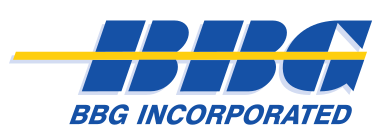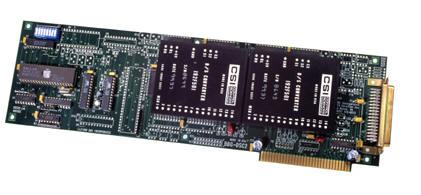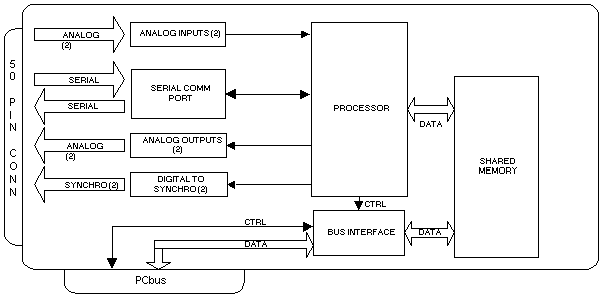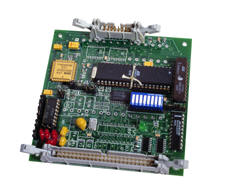Applications
- Radar Systems (antenna azimuth)
- Navigation Systems (gyrocompass, speedlog, course, pitch, and roll)
- Industrial Processes (position, velocity)
- Meteorology Instruments (wind speed and direction)
- Many Others
Card Layout:
Features:
- IBM PC Compatible
- Analog/Serial Input
- Analog/Serial and Two-Speed Synchro/Resolver Outputs
- NMEA-0183 Compatible RS-232, RS-422, RS-423, RS-485, MIL-STD-188C Protocols
- Dual Port Interface to PCbus
- Stand-alone Mode with Additional Power Supply
- Custom Implementations Available Upon Request
The BBG-DSC2 is a full-size IBM PC card which interfaces between analog, serial, synchro, and/or resolver signals. Two channels of analog information (-5 to +5 voltage range) and/or one channel of serial information representing speed or angular position can be received and processed by the onboard microcontroller. This data, formatted as a binary angle measurement (BAM) number as shown in Table 2, is passed through dual port memory to the PCbus on demand from the host computer.
The processed angular information is, also, available in three different data formats on a 50 pin “D” connector. A NMEA-0183 serial data format updated at a rate of once per second is transmitted over both RS-232 and RS-422 interfaces. Two channels of analog information (-5 volt to +5 voltage range) is transmitted continuously. Two factory configurable synchro or resolver outputs representing speed and/or angular position is output continuously at a user defined voltage and frequency. The synchro/resolver outputs can be two independent channels or one dual speed channel (1X, 36X).
The BBG-DSC2 can, also, be used without a computer in a stand alone mode. During power up or reset, an onboard microcontroller reads the configuration switch and configures the card to provide all signals and control necessary for full interface operation.
When used in a computer configuration, switches provide for bus address selection and interrupts IRQ2 thru IRQ7 are jumper selectable. Baud rates are switch selectable and can be programmed via the PC bus. Selectable baud rates include: 1200, 2400, 4800, 9600, and 19,200 bits per second. Default data output is 9600, 8 bits, no parity, and one stop bit (9600, 8, N, 1). Table 3 (on the data sheet) defines the switch position for the available baud rates.
| Technical Specification | ||
| Parameter | Value | Units |
| Power Input | 5 | Volts |
| 250 | Milliamps | |
| Temperature Range | ||
| Operating Temperature | 0 to +50 | °C |
| Storage Temperature | -65 to +150 | °C |
| Physical Characteristics | ||
| 4.5 x 13.5 x 0.6 | Inches | |
| 11.4 x 34.3 x 1.5 | Centimeters | |
The synchro format output is a standard 5 wire (S1,S2,S3,RL, and RH) at 90V LL or 11.8V LL. Resolver output is a standard 6 wire (Sin, Sin Return, Cos, Cos Return, RH, and RL) at 6.8Vrms. Standard reference inputs of 60 Hz and 400 Hz are supported with custom voltages and frequencies available upon request.
The serial data output uses the NMEA 0183 message structures and supports RS-232, RS-422, RS-423, RS-485, and MIL-STD-188C protocols. The analog I/O interfaces to dc signals over the range of -5 to +5 volts.
The BBG-DSC2 is a “SMART” interface due to the onboard processor which communicates with the PCbus through shared memory, thus, requiring minimum PC processor time. Angular information is available to the PCbus via shared memory.
In situations not requiring a PC interface, the BBG-DSC2 operates in a “STAND-ALONE” mode. With the addition of an external +5 volt power supply, the onboard processor converts the serial inputs into synchro/resolver and serial data formats without the requirement of a PCbus.
Reference inputs, serial inputs, synchro/resolver outputs, and serial outputs are available on a 50 pin male (DB50P) connector.






